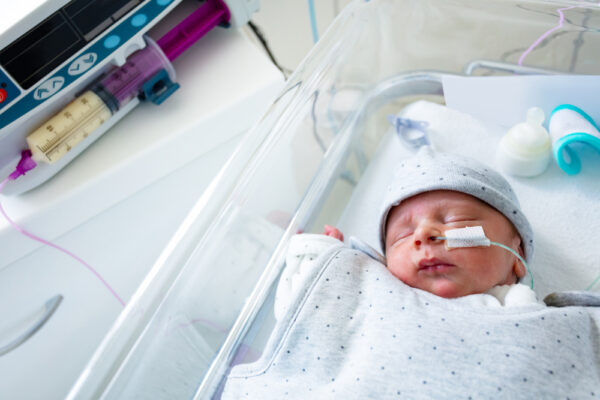
You probably do not know it, but the air you breathe on airplanes comes from the jet engines. “Bleed air” as it is known, is compressed air taken from the compressor stage of a jet engine upstream of its fuel-burning sections. It is used in many aircraft to supply the air that we breathe to the cabin.
The way it commonly works is depicted below, with air entering the jet engines where it is superheated and pressurized before being fed into an air conditioning unit, where it is cooled before being sent to the “mixing manifold.” In the mixing manifold, the now-cooled bleed air is mixed with existing cabin air and recirculated in the cabin.

Usually, this system works. Unfortunately, “usually” is not “always”, and by some measures, 1 in every 5,000 flights end up experiencing a “fume event.” That may not seem like a lot, but with the FAA reporting more than 45,000 flights per day in the United States, that could be several events every single day.
The problem arises when engine oil or lubricants bypass seals intended to prevent dangerous fumes from entering the cabin air stream. Contaminated bleed air contains tricresyl phosphate. This chemical, an oil additive known as “TCP” is an organophosphate added to engine oil. TCP has been scientifically and medically recognized as a neurotoxin since the 1930s. TCP can have immediate effects such as headaches and dizziness, as well as longer-term effects such as tremors and memory problems, experts say. In addition to TCP, carbon monoxide can be introduced into the cabin. As anyone with a furnace at home knows, carbon monoxide is an odorless toxin. Its danger is that it displaces oxygen in the bloodstream, eventually leading to deoxygenation of the brain and potential brain injuries. Because each person’s body may react to neurotoxins differently, it explains how one passenger might feel fine and other might feel incapacitated.
An analysis performed by the Los Angeles Times of NASA Safety Reports over less than a two-year period from January 2018 to December 2019 identified 362 fume events that airline crew members anonymously reported to the agency. Of those, nearly 400 pilots, flight attendants, and passengers required medical attention and in 73 instances, pilots needed to use emergency oxygen in the cockpit to safely land the plane. Nearly 50 of the affected pilots were described as so impaired from the fumes, they were unable to safely perform their duties flying the aircraft. Because no regulation requires airlines to report sicknesses linked to fume events and the FAA, for its part, rarely collects such information, the NASA Safety Reports may be the best data publicly available. But even the NASA Safety Reports are anonymous and since they are not mandated by federal law, likely understate the scope of the problem.
The same investigative reporting from the LA Times states:
“Pilots and flight attendants have reported an array of health problems, including eye irritation and coughing, as well as more serious long-term conditions: tremors, memory problems, brain damage and other illnesses that have kept them out of work for months and sometimes ended their careers, according to airport and aviation records, workers’ compensation filings, court papers and other documents.”
So why haven’t airplane manufacturers like Boeing equipped their planes with sensors to detect fume events? Publicly, Boeing claims it is because potential suppliers of such detectors have not demonstrated the existence of devices that could reliably detect contaminated bleed air. But in 2019 litigation, Boeing’s own experts have admitted that sensor technology that could be adapted for planes “could probably be bought off the shelf” and had been available for “more than 10 years.” Boeing has also defended its failure to install sensors by maintaining that scientific studies have not proved a link between fume events and health problems. But the studies aircraft manufacturers rely on looked at normal flights in which no fume events were reported. No major research has ever measured the chemicals in fume events while they are occurring and it is clear that fume events continue to occur with ensuing illness.
The problem is not knew, internal Boeing documents from at least the 1950s show the aircraft manufacturers long-ago recognized “The Air Contamination Problem”:

Internal Boeing documents show it appeared to acknowledge the issue in 2001 when it asked vendors to present sensors capable of alerting crew members within a minute of “compromised air quality conditions.” Numerous suppliers, including Honeywell and General Electric presented sensor options for Boeing, but Boeing decided against installing sensors. As acknowledged in depositions and internal emails, Boeing was concerned about potential civil liability.
One of those depositions was of a Boeing senior engineer, George Bates, who acknowledged in a 2018 deposition that there were internal concerns that sensors would collect data that could be used by sick passengers or crew members in litigation against Boeing. “The biggest impeding factor is the legal issues,” Bates wrote in a 2008 email.
Another internal Boeing email from Gates in 2011: “How long will it take until the readings have to be recorded and available not only for maintenance, but for the lawyers?” Other Boeing engineers agreed, with another on the same email chain agreeing that making sensor data available would be “crazy!”
Bates attention to the problem was increased when he noticed that certain Boeing aircraft were having to be diverted because of toxic fume events as frequently as once every two weeks. Bleed air engine seals were leaking so much oil that cabin air was so contaminated crews could not see the length of the aircraft.
“Given the number of … events for the 757… I would have thought the FAA would have forced the issue,” Bates wrote in an email to colleagues. “Bottom line is I think we are looking for a tombstone before anyone with any horsepower is going to take interest.”
While internal Boeing documents obtained in litigation showed that senior engineers were worried that if sensors were used and deployed, the data would only help sick passengers and crew members succeed in lawsuits against airplane manufacturers, other internal Boeing memos revealed that giving sensors even one airline was a “risk” since other interested groups might use such use such a deployment to “advance their agendas.”
One of those groups interested in fixing this problem is largest union of cabin crews, the Assn. of Flight Attendants. That union has been calling for the FAA to take action on fume events for more than 25 years:
“The industry is concerned about liability, and the FAA is protecting the industry,” said Judith Anderson, who works on health and safety issues for the union.
What do to? While travelers might feel safe wearing surgical masks or N95 masks because of the pandemic, not even these can filter out the dangerous fumes associated with toxic cabin air. While the FAA provides no official guidance on what do to in a toxic cabin fume event, the Association of Flight Attendants-CWA Union provides a fume information card for use by flight attendants. It warns that some fumes can cause immediate headaches, dizziness, and fatigue, with other symptoms sometimes delayed. The Union further warns that oil fumes often smell like dirty socks and hydraulic fumes often smell acrid. Carbon monoxide alone may have no smell at all and sometimes smoke will be visible in the cabin.
The best thing for travelers concerned about toxic air is be aware of odors in the cabin. If you smell something foul in the air, see smoke, or are feeling ill alert the cabin crew because you might just be in a toxic cabin.

The Legal Examiner and our Affiliate Network strive to be the place you look to for news, context, and more, wherever your life intersects with the law.













4 Comments
John Hoyte
The disease caused to aircrew & passengers was termed Aerotoxic Syndrome in 1999 by a US Doctor, a French forensic scientist & Australian Toxicologist - further evidence at www.aerotoxic.org - Excellent article.
Matthew S. Sims
Thank you for your comment John. - Matt
lyn augustin
Yes, 40,000 hours inside of airplanes takes a toll on the human body.
One needs to detox.
Ekaterini
What the article is missing is that in the cabin are VOCs and other organic compounds present that are known to cause neurological injuries so called polyneuropathies. The described symptoms after fume events can be connected to polyneuropathies and have been found in crew members multiple times already. The connection between organic compounds and polyneuropathies has been scientifically researched and the results have been published. There is no doubt that cabin air contaminants cause permanent neurological injuries.
Comments for this article are closed.